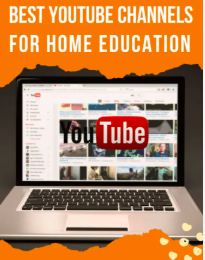Massive Open Online Courses (MOOCs) have changed the landscape of education by making college-level instruction accessible to anyone with an internet connection. Whether you’re in high school, college, or already in the workforce, MOOCs are a valuable way to enrich your education. These online courses, offered by top universities and institutions, allow learners to gain new knowledge, build practical skills, and earn certificates that can enhance resumes and academic profiles. Here’s how you can use MOOCs effectively to supplement your education:
- Identify Your Learning Goals – Before enrolling in a MOOC, clarify what you want to achieve. Are you trying to explore a new subject, strengthen skills in your major, or prepare for a certification exam? Defining your purpose helps you stay focused and choose courses that align with your academic or professional goals. For example, a student interested in psychology may use MOOCs to explore cognitive science or mental health topics outside the regular curriculum.
- Choose the Right Platforms – Popular MOOC platforms include Coursera, edX, FutureLearn, Udacity, Alison, and Swayam. Each platform has unique strengths. Coursera and edX offer university-level courses with potential credit, while Udacity focuses more on job-ready skills in tech and business. Swayam is especially useful for students in India, offering courses aligned with national education standards.
- Audit Courses for Free – Most MOOCs allow you to access course content for free, including video lectures, reading materials, and discussion forums. This is ideal for learners on a budget who want to build knowledge without paying for certification. If you find a course particularly valuable or want to showcase it on a resume or portfolio, you can upgrade to a paid version to receive a certificate.
- Integrate MOOCs Into Your Academic Schedule – Use MOOCs to reinforce or expand on topics you’re already studying. For instance, if you’re enrolled in a college chemistry course, you might find a MOOC that explains challenging concepts with animations and practice problems. These courses can also fill gaps during academic breaks or summer holidays, keeping your mind sharp and engaged.
- Use MOOCs for Career Preparation – Many MOOCs are designed with career readiness in mind. Platforms like Coursera and Udemy offer professional development courses in areas such as data analysis, public speaking, project management, and entrepreneurship. You can take these to prepare for internships, job interviews, or career transitions.
- Earn Verified Certificates – Completing MOOCs with verified certificates can demonstrate initiative and subject mastery. These certificates are particularly valuable when applying for competitive scholarships, internships, or graduate programs. They also strengthen your professional presence when added to a LinkedIn profile or digital portfolio.
- Join Course Communities – MOOCs often feature peer discussion forums, which allow students to ask questions, share ideas, and collaborate on assignments. Engaging in these discussions helps simulate a classroom environment and can enhance understanding through peer-to-peer learning. Some MOOCs also include live sessions or webinars for real-time interaction.
- Track Your Progress – It’s important to stay organized when taking MOOCs. Use tools like Google Calendar, Notion, Trello, or even a traditional planner to set study goals and track deadlines. Make time each week to complete lessons, take quizzes, and review notes. Consistency ensures you don’t fall behind or lose momentum.
- Apply What You Learn – The best way to reinforce new knowledge is through application. Many MOOCs include optional projects that let you use your learning in real-world scenarios. You might build a portfolio website after completing a web development course or write a case study analysis following a business course. Applying skills helps improve retention and builds practical experience.
- Reflect and Review – At the end of each course, take time to reflect. What did you learn? How does it relate to your academic or career goals? What skills or concepts would you like to explore further? Keeping a learning journal or digital portfolio can help document your growth and serve as a reference when planning future educational steps.
- Explore Credit Options and University Pathways – Some MOOCs offer college credit or can be counted toward formal degree programs. Platforms like edX and Saylor Academy have credit pathways through partner institutions. If you’re a high school student preparing for college or an adult learner returning to education, this can be an affordable way to begin earning credit.
- Customize a Learning Path – Combine multiple MOOCs into a custom curriculum based on your goals. For example, someone preparing for a career in environmental science might take MOOCs in climate change, data analysis, and geographic information systems (GIS) from different platforms. This approach allows for a well-rounded, interdisciplinary learning experience.
- Use MOOCs to Prepare for Standardized Exams – There are many MOOCs that cover content found in standardized tests such as the SAT, GRE, TOEFL, or professional licensing exams. By integrating these courses into your study routine, you gain both content knowledge and test-taking strategies.
- Encourage Lifelong Learning – Finally, MOOCs aren’t just for formal education. They’re an excellent tool for personal growth, exploration, and staying current in a rapidly changing world. From digital photography and philosophy to AI ethics and global health, there’s a course for nearly every interest.
In conclusion, MOOCs are a flexible and effective tool for supplementing your education. Whether you’re strengthening academic skills, exploring a new field, or gaining credentials for your career, MOOCs provide a low-cost and accessible way to keep learning. With intentional planning and active engagement, you can use MOOCs to enrich your educational journey, connect with global learners, and unlock new opportunities throughout your life.














